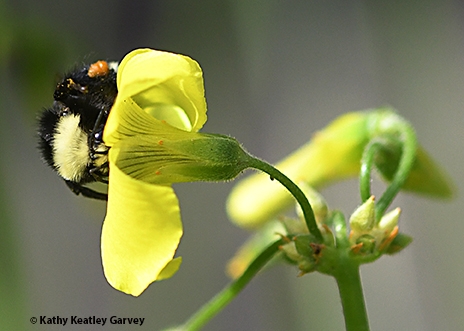
Yes, after a l-o-n-g, cold, hard winter, bumble bees are emerging.
At least in Solano County.
At 11:20 a.m. today (Wednesday, Jan. 13), we spotted a yellow-faced bumble bee, Bombus vosnesenskii, foraging on oxalis near downtown Benicia.
What a delight! A January bumble bee and the first one we've seen this year.
So, this is a good time to mention the inaugural Robbin Thorp First-Bumble-Bee-of-the-Year Contest, sponsored by the Bohart Museum of Entomology and coordinated by Bohart director Lynn Kimsey, UC Davis professor of entomology.
Just photograph a clearly identifiable bumble bee in the two-county area of Yolo or Solano, and submit it to bmuseum@ucdavis.edu with the time, date and place. The winner receives bragging rights and a special gift from the Bohart Museum. Plans call for a Bohart coffee mug with a bumble bee image.
The contest memorializes native pollinator specialist and Bohart associate Robbin Thorp (1933-2019), UC Davis distinguished emeritus professor of entomology. Professor Thorp, 85, who died June 7, 2019, was a global authority on bumble bees, and always looked forward to seeing the first bumble bee of the year. He launched an impromptu contest several years ago with a small group of bumble bee enthusiasts/photographers (including yours truly) from Yolo and Solano counties. (Note: I am not a contestant.)
Early Bumble Bees
The black-tailed bumble bee, Bombus melanopygus, is usually the first bumble bee to emerge in this area, Thorp used to say. It forages on manzanitas, wild lilacs, wild buckwheats, lupines, penstemons, clovers, and sages, among others. In early January, it's often seen on manzanita blossoms in the UC Davis Arboretum and Public Garden. B. vosnesenskii forages on such early bloomers as oxalis, jade, mustard and wild radish, and then on a variety of plants throughout the year. Both species are natives.
Thorp, a 30-year member of the UC Davis entomology faculty, from 1964-1994, co-authored two books, Bumble Bees of North America: An Identification Guide (Princeton University, 2014) and California Bees and Blooms: A Guide for Gardeners and Naturalists (Heyday, 2014). He achieved emeritus status in 1994 but continued to engage in research, teaching and public service until a few weeks before his death.
A tireless advocate of pollinator species protection and conservation, Thorp was known for his expertise, dedication and passion in protecting native pollinators, especially bumble bees, and for his teaching, research and public service. He was an authority on pollination ecology, ecology and systematics of honey bees, bumble bees, vernal pool bees, conservation of bees, native bees and crop pollination, and bees of urban gardens and agricultural landscapes.
Ready to join the hunt for the first bumble bee of the year in Yolo and Solano counties? Camera ready? Walking shoes laced? Go!
Attached Images:
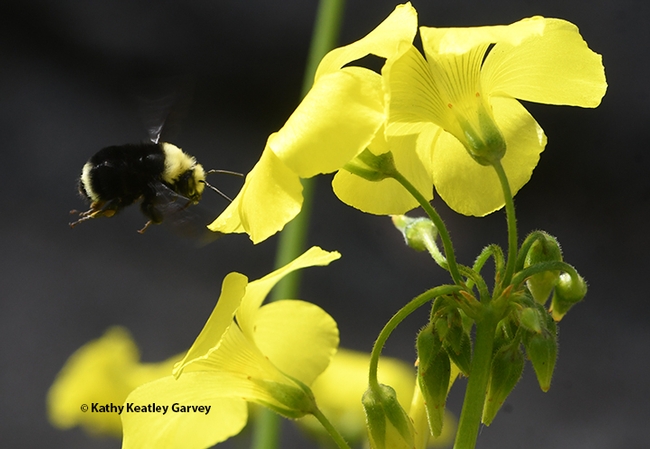
A yellow-faced bumble bee, Bombus vosnesenskii, heads for oxalis blossoms in Benicia on Jan. 13, 2021. (Photo by Kathy Keatley Garvey)
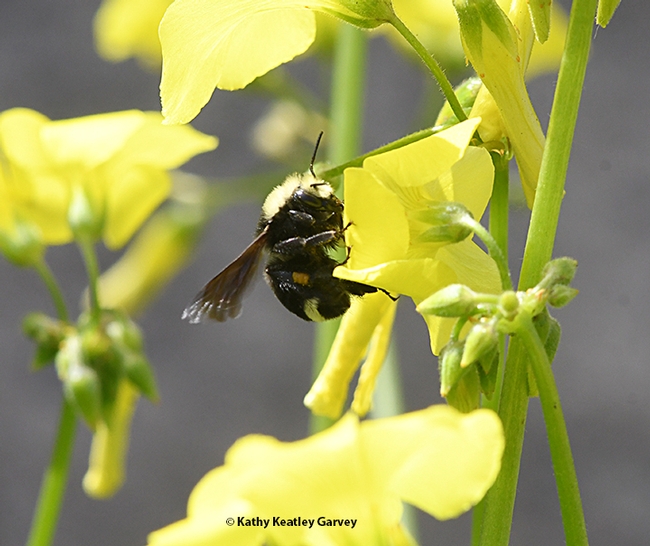
Side view of a yellow-faced bumble bee, Bombus vosnesenskii, on oxalis in Benicia. Note the orange pollen. (Photo by Kathy Keatley Garvey)
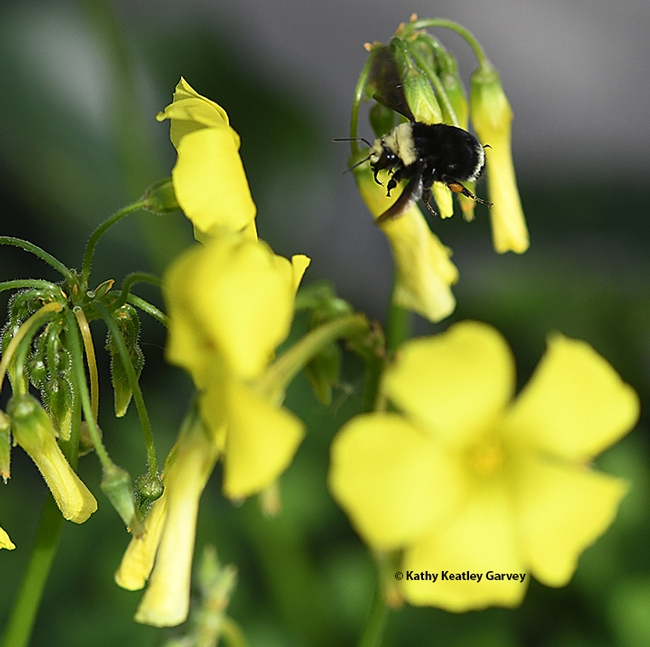
The Bombus vosnesenskii, caught in flight, targets oxalis in Benicia. (Photo by Kathy Keatley Garvey)
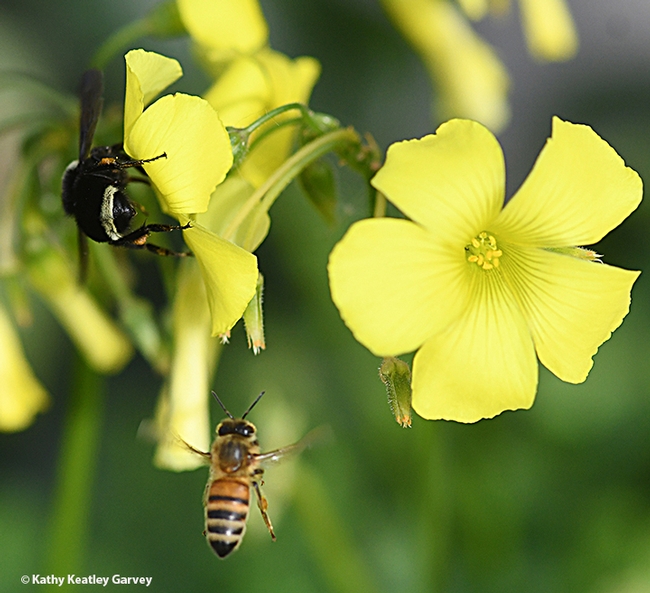
A honey bee buzzes toward the foraging bumble bee. (Photo by Kathy Keatley Garvey)